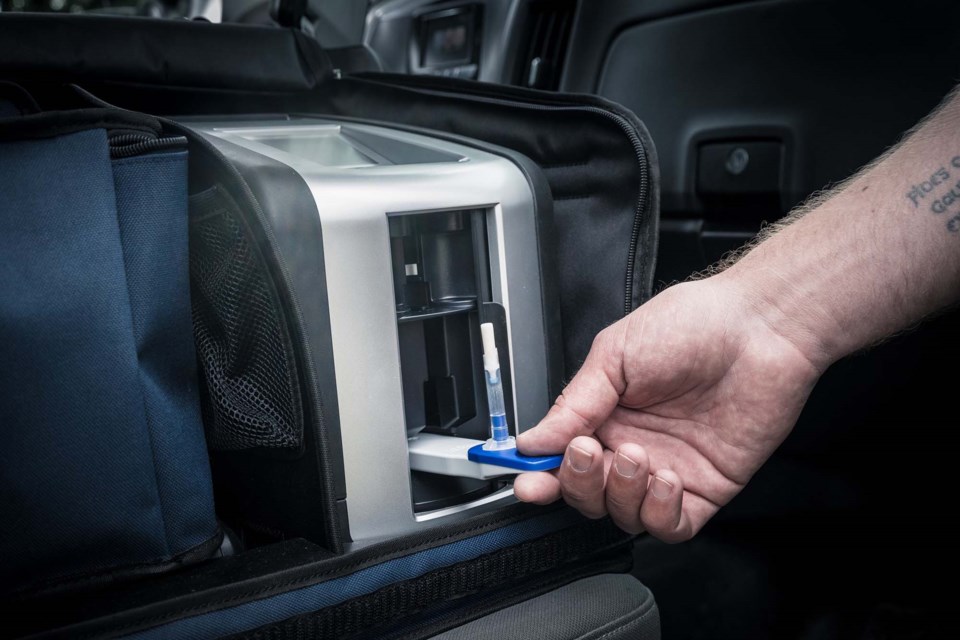A mid-May traffic stop in Whitecourt afforded local RCMP the opportunity to put a new drug detection device to the test.
It passed the test; the driver didn't.
Alberta’s motorists can now expect to see this happen more frequently.
“It’s essentially a screening tool. It’s the drug version of the roadside approved screening device that you would blow into at a Checkstop, for example, to screen for alcohol impairment,” said Const. Matt Firmston with the Alberta Sheriff Highway Patrol, referring to what is commonly called the Breathalyzer.
The Drager drug test screens for drug impairment. Right now, police officers in Canada are only approved to use the device to screen for THC and cocaine.
“Just those two drugs right now; however, within the next year we anticipate that the federal government will approve using that for methamphetamine as well. That will expand our ability to detect those substances.”
In the Whitecourt instance, the attending officers conducted a traffic stop on a suspicious SUV that was parked with a sleeping male in the driver’s seat. They observed drug paraphernalia and called in Alberta Sheriffs to conduct a joint investigation with the Drager device on which they had recently received training.
Based off of a saliva sample provided, the individual was found to have cocaine in his system.
“We use [the device] in addition to some other sobriety testing, which we call standardized field sobriety tests. Those are the battery of physical co-ordination tests that we would put a person through,” said Firmston.
“Basically what the screening devices allow us to do is to form our grounds to believe that a person is impaired by drugs. At that point, we can proceed with a criminal impaired driving charge, or we can revert to the newer provincial model which is the immediate roadside sanctions. It gives us grounds to do either/or.”
As a result, the driver was issued a 90-day licence suspension, a 30-day vehicle seizure, and violation tickets under both the Gaming Liquor and Cannabis Act and the Traffic Safety Act.
The pilot project currently has 15 such devices deployed by Alberta Sheriffs who are trained and authorized to use them. From March to June, they have been used to initiate 18 drug impaired investigation files resulting in 14 immediate roadside sanctions.
Firmston said the Edmonton Police Service has two Dragers and the RCMP also have a few, though none are in St. Albert yet. The plan is to expand their use so that by the end of November, they anticipate that 65 of these devices will be deployed province-wide.
“There have been some cases [previously in the province] of them being used, but I think in the few months that we’ve had our 15 deployed, I think that we have gotten more results than the other agencies have been able to just because we’ve got more of them.”
The devices get their biggest success when the officers apply them to taking an administrative punishment rather than taking the driver to court to face criminal charges. Administrative immediate roadside sanctions occur with novice drivers with graduated driver’s licences or with commercial vehicle drivers. Their licences stipulate zero tolerance for drugs or alcohol.
Blowing into a roadside screening device for alcohol and getting a positive test would result in losing their licence for a month, “But it was always really difficult to be able to determine conclusively that they had a drug in their body because there wasn’t any kind of testing for that,” Firmston said.
“That’s really what the Drager device does.”
Alberta Sheriffs anticipate a full deployment by November, which will also see all of its members receiving training to use the device.
“There will be about 150 people, whereas we only have 15 right now. We anticipate that these numbers that we’re starting to see on an annual basis are going to increase significantly over the next year.”



